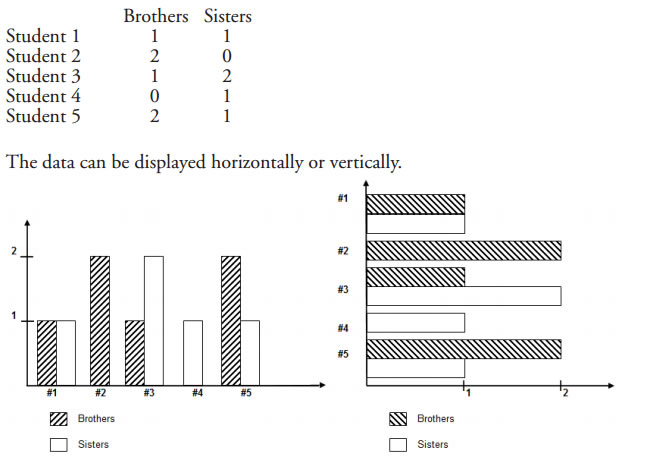

Statistics - Grade 5
In these lessons, we will learn how to differentiate between first-hand and second-hand data. We will learn how to draw and interpret double bar graphs.
First-Hand Data and Second-Hand Data
Differentiate between first-hand and second-hand data.
First-hand data is data that you collect yourself.
Second-hand data is data that is collected by someone else.
First-Hand Data
• Data collected by the researcher (in school, this is the student)
• Observations, surveys, experiments
• Student primary source
• Questions created should help give more precise answers
Second-Hand Data
• Data collected by others and used for secondary analysis
• Found in news, Internet, statistics
• Student not part of data collections or questioning
• Can create questions based on data
First hand vs second hand data.
Double Bar Graph
A double bar graph is best used to show how two sets of data are
different or alike.
In a double bar graph:
• Each set of data must use the same scale
• All graphs must have a title, scale and legend.
• The order of colors must remain the same throughout.
An example is presented below. Five students in the
class have been asked how many brothers and sisters they have.

Drawing double bar graphs
Interpreting double bar graphs.
Double Bar Graphs.
Double Bar Graphs
Learn to make and interpret double bar graphs.
Try out our new and fun Fraction Concoction Game.
Add and subtract fractions to make exciting fraction concoctions following a recipe. There are four levels of difficulty: Easy, medium, hard and insane. Practice the basics of fraction addition and subtraction or challenge yourself with the insane level.



We welcome your feedback, comments and questions about this site or page. Please submit your feedback or enquiries via our Feedback page.